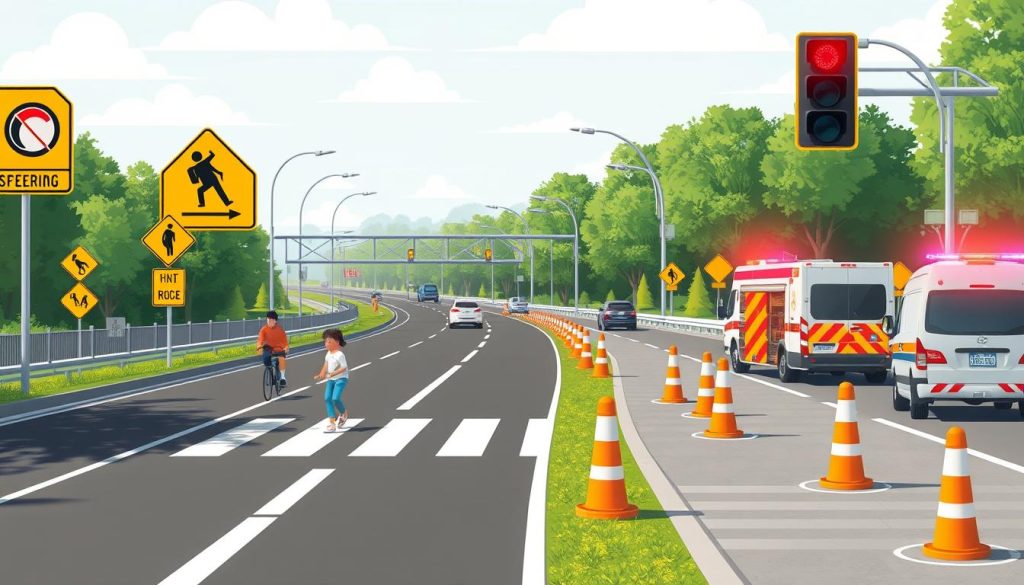How Can Traffic Safety Experts Help Prevent Accidents?

Worksites on or near roadways present serious safety challenges—not just for the workers, but for drivers, cyclists, and pedestrians. From construction zones to utility repairs and roadside maintenance, any disruption to regular traffic flow introduces the potential for accidents. That’s why traffic safety experts play such a vital role in keeping job sites secure and preventing injuries and fatalities.
Organizations like Salus Traffic safety experts specialize in analyzing risk, designing safety protocols, and managing control measures that reduce accident rates in high-risk environments. But how exactly do they do that? Let’s break it down.
1. Conducting Site-Specific Risk Assessments
Every job site is different. What works on a residential street may not apply to a multi-lane highway or a narrow bridge. Traffic safety professionals begin by conducting a detailed risk assessment that considers:
- Type of road and traffic volume
- Time of day and visibility conditions
- Weather impact (rain, snow, glare, wind)
- Worker and equipment locations
- Potential hazards for pedestrians and cyclists
This evaluation helps identify all the areas where accidents are likely and allows safety teams to implement proactive solutions.
2. Developing Traffic Control Plans (TCPs)
A well-crafted Traffic Control Plan is key to avoiding confusion and collisions. Experts design these plans with compliance in mind, ensuring they follow local and national guidelines. A TCP includes:
- Lane closures and tapering diagrams
- Detour routes for vehicles and pedestrians
- Placement of signs, cones, and barriers
- Emergency vehicle access provisions
- Flagging zones and safety buffer areas
These plans are submitted to local authorities and adjusted as the work progresses, ensuring the site remains compliant and safe from start to finish.
3. Training and Deploying Certified Traffic Control Personnel
Proper staffing is essential. Traffic safety experts oversee the recruitment, training, and deployment of certified personnel, including:
- Traffic control persons (flaggers) to direct flow and communicate with drivers
- Supervisors to enforce compliance on-site
- Signal operators to manage temporary traffic signals during major lane shifts
This ensures human oversight is available in high-risk areas, especially where automated systems or signage alone aren’t sufficient.
4. Implementing Safe Signage and Visibility Measures
A large percentage of accidents happen due to confusion or lack of visibility. Traffic safety professionals ensure:
- Proper placement of warning signs and speed limit reductions
- Use of retroreflective materials for night visibility
- Deployment of digital message boards for real-time updates
- Installation of flashing beacons or lights near dangerous curves or narrow zones
Visibility is a major deterrent to accidents, especially in low-light or high-speed areas.
5. Adjusting Traffic Flow Based on Real-Time Conditions
Things can change quickly on a job site—weather, traffic surges, or equipment breakdowns. Experts monitor these variables and adjust accordingly:
- Temporarily increase personnel during rush hour
- Redirect traffic away from hazards
- Halt work if visibility or safety is compromised
- Coordinate with local authorities for real-time traffic alerts
This dynamic approach allows safety teams to react quickly and reduce accident risks.
6. Educating Work Crews and the Public
It’s not just about signage—people need to know how to behave in a construction zone. Traffic safety consultants offer:
- On-site training for construction crews on safe entry/exit protocols
- Public information campaigns when road closures or detours are scheduled
- Communication with local emergency services and schools
Education empowers everyone to make safer decisions.
Conclusion
Traffic safety experts are essential in preventing accidents on and around active job sites. From designing control plans and deploying personnel to ensuring proper signage and adapting to real-time changes, their work creates safer environments for everyone on the road.





